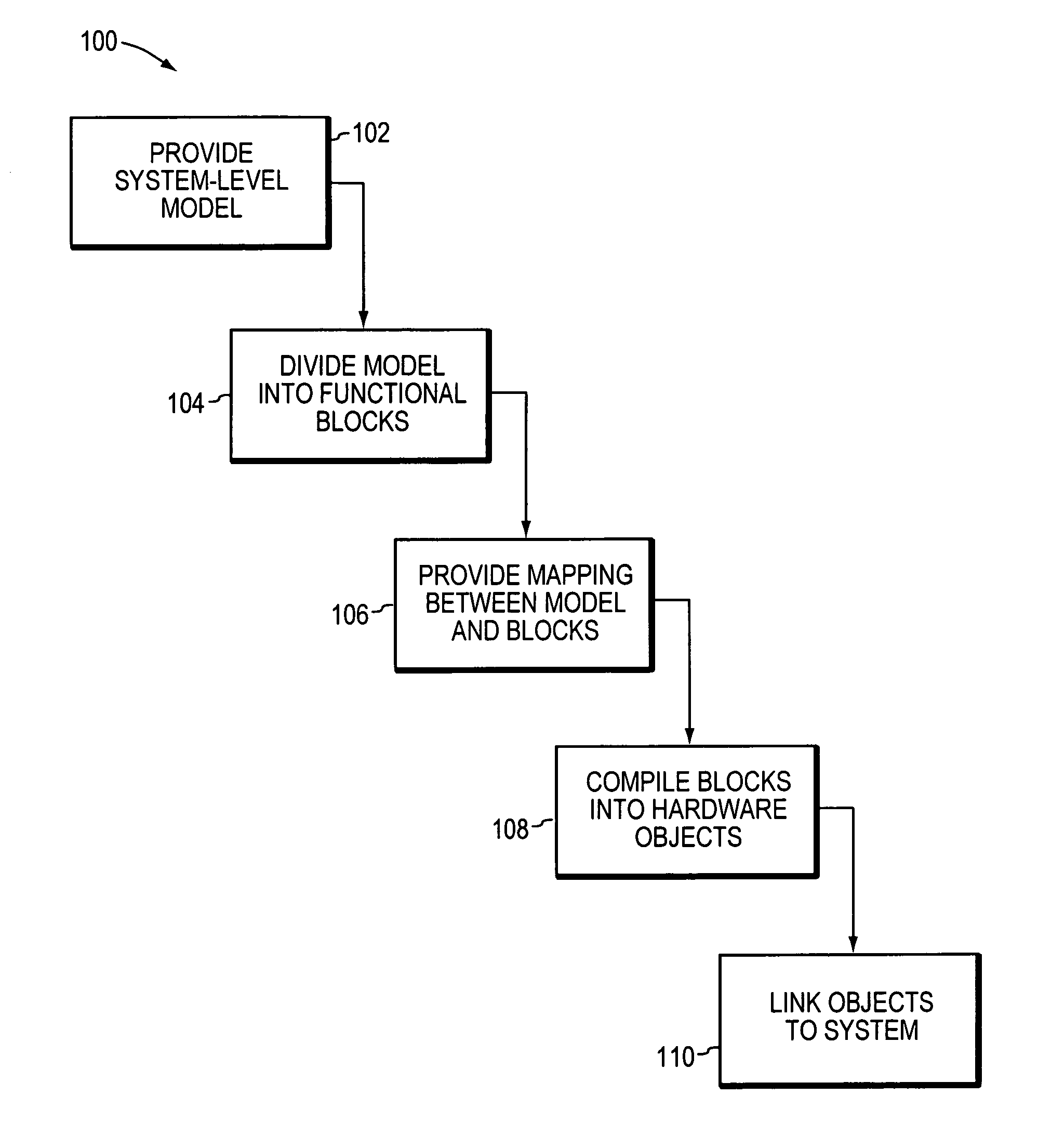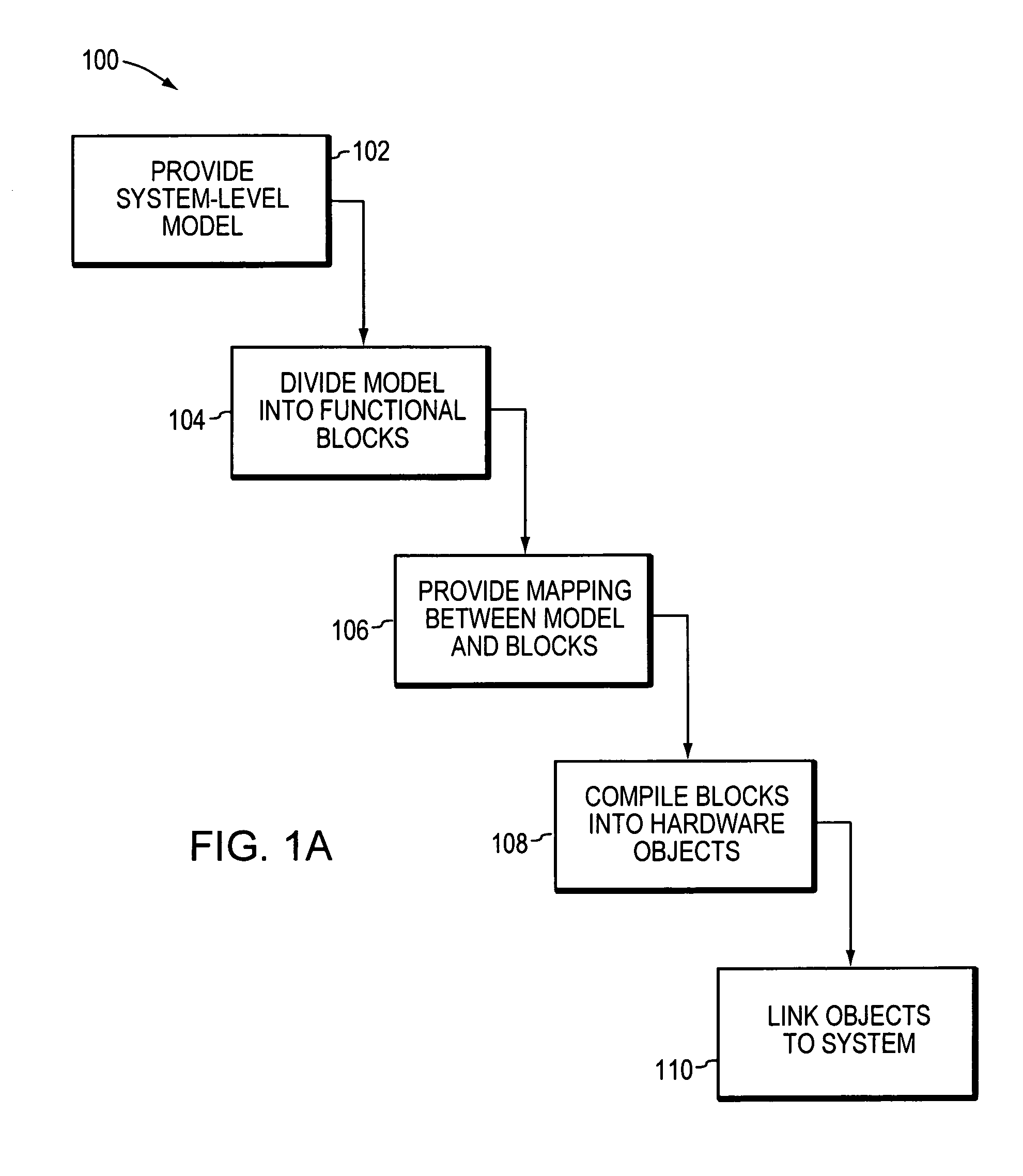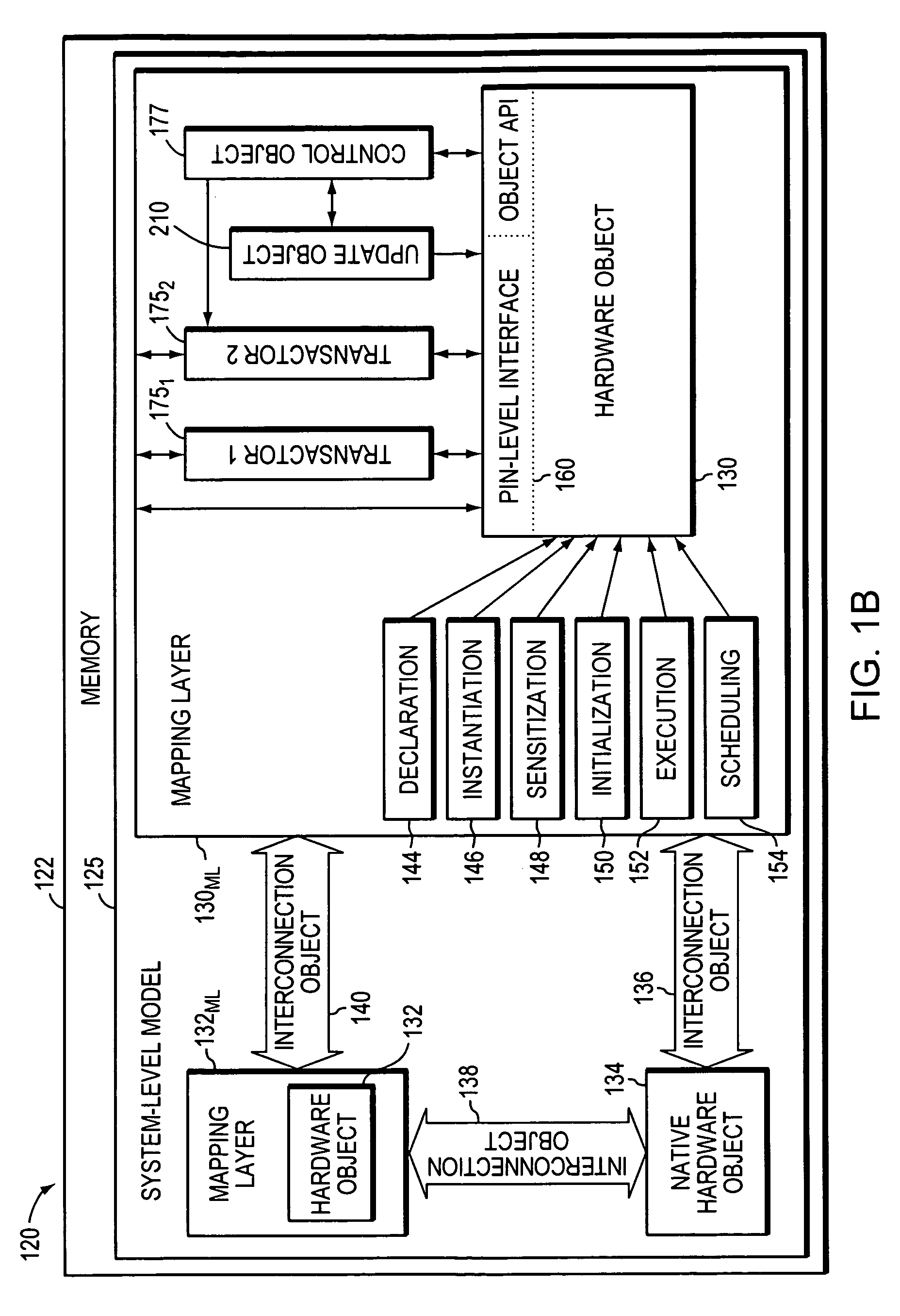System-level simulation of devices having diverse timing
a hardware simulation and timing technology, applied in the field of hardware simulation, can solve the problems of delay in software design and testing, time-consuming and expensive process of producing electronic devices, and inability to develop software, etc., and achieve the effect of increasing the speed and versatility of hardware simulation
- Summary
- Abstract
- Description
- Claims
- Application Information
AI Technical Summary
Benefits of technology
Problems solved by technology
Method used
Image
Examples
Embodiment Construction
[0024] In brief overview, FIG. 1 is a flowchart depicting a method 100 in accordance with an embodiment of the invention for optimizing a system-level simulation of a hardware device to achieve a balanced simulation of low-level hardware specifics at high run-speeds. Broadly, the method provides a system-level model or execution environment (STEP 102), divides the model into functional blocks of high-level code (STEP 104), provides a mapping between the system-level model and the functional blocks (STEP 106), and compiles the functional blocks into API-accessible, run-time object code (STEP 108). For example, if the source code (i.e., functional block) of a FIFO buffer was written in C and stored in a file named fifo.c, the compiled run-time object code may reside in a file named fifo.o (hardware object). Pre-compiled objects in some embodiments are recompiled. Following compilation (STEP 108), the run-time hardware objects are linked (STEP 110) to the system-level model. The linkin...
PUM
 Login to View More
Login to View More Abstract
Description
Claims
Application Information
 Login to View More
Login to View More - R&D
- Intellectual Property
- Life Sciences
- Materials
- Tech Scout
- Unparalleled Data Quality
- Higher Quality Content
- 60% Fewer Hallucinations
Browse by: Latest US Patents, China's latest patents, Technical Efficacy Thesaurus, Application Domain, Technology Topic, Popular Technical Reports.
© 2025 PatSnap. All rights reserved.Legal|Privacy policy|Modern Slavery Act Transparency Statement|Sitemap|About US| Contact US: help@patsnap.com



